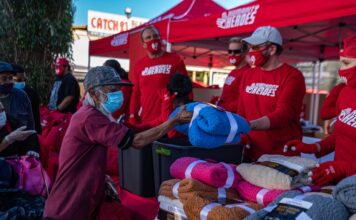So, you want to launch a brand. Congratulations! Though there are no hard numbers for CBD brand failure or success rates, according to the Small Business Association 30 percent of new businesses fail during the first two years after opening, 50 percent during the first five years, and 66 percent during the first ten.
I don’t need to tell you the CBD market is hyper-competitive and everyone wants a piece of the action. New companies sprout up every day. That’s why your brand (and remember, a brand is more than a mere logo) needs to be clearly defined and thoughtfully executed. Sure, financing, hiring, creating a business plan—the usual steps for starting a new business—are necessary, but they’re moot if your brand is forgettable or in disarray.
Here are four reasons why your brand could fail.
Zero direction
If you have no clear direction or focus on what you are offering, you won’t know how to market and your customers certainly won’t know who or what you are. If you don’t do the research or pour over both quantitative and qualitative data, you’ll be winging it. Take the time to do research and gather data.
Bootstrapping? Great, but don’t spend all that cash on focus groups. At the very least, investigate online tools for gathering data. You can do a lot with SurveyMonkey. Data will help you understand what needs in the market you’ll be meeting, as well as who your customers and competitors will be. Make decisions based on data.
Takeaway: Define what you offer through research.
Amateur (logo) hour
True, a brand is more than a logo, but if that logo looks amateurish or evokes inappropriate imagery (cannabis leaf, skull and crossbones, etc.), it won’t match your brand voice. Again, start with research and analytics. Know who you’re talking to, what motivates them, and what motivates you. Authenticity is incredibly important.
Armed with this information, you can start thinking about brand ID, look and feel, and color choices. Your final look is up to you and your design team.
One thing all lasting brands have in common: a clear ID and a unique look. Your brand needs to motivate and inspire you—because if it doesn’t, it certainly won’t motivate your customers.
Takeaway: Have a clear look and style.
Inconsistent brand ‘voice’
Have you defined what your organization means to the community? Are there clear voice and tone definitions for how you communicate with the public, investors, and media? Not to sound like a broken record but, again, research, research, research. From this, your voice will emerge (is it edgy, sophisticated, chill?) and you’ll have a better sense of how it connects to your value proposition and how you’re positioned in the market. Defining your brand voice also will allow you to be more authentic, whether that’s speaking to investors, the media, or even employees
Keep your newfound voice consistent and develop a style guide that ensures your name, logo, messaging, and font are used correctly both internally and externally.
Takeaway: Find your own authentic voice and stick with it.
Misrepresentation in the marketplace
To briefly get philosophical… People have some idea of who they are and what they are like, but the public has another idea. Often, the real identity exists in some space between what the individual thinks and what the public thinks. That’s also true of every brand: There’s what the framers want the brand to be and there’s how the public sees the brand. A brand’s true essence exists in the space in between. It’s quite common for even the most diligent brands to be misrepresented either by a salesperson or a distributor. Therefore, forming and building relationships with influencers like salespeople is crucial so they’ll tell your unique story and represent your product correctly. They’re your brand ambassadors.
Provide distributors, retailers, and salespeople with product sheets and FAQs that help them better explain what your product does, how it performs, and what makes it unique. Visit retailers, talk to owners, find out what they want or what’s selling. In a highly curated marketplace, you and your competition are angling for the same shelf space.
Takeaway: Build a brand ambassador program to help educate those who represent your brand.
Starting a new business is exciting and exhilarating. Stay the course, do the research, and pour over your data before doing anything else. Know where you are in the market and what need you can fill. Then pull the proverbial trigger. Good luck on your journey!
 Carol Ruiz is co-founder and partner at Higher Ground PR and Marketing. With more than twenty years’ experience, she crafts campaigns that capture the attention and imagination of the press, communicate the right messages to the right audiences, increase name and brand awareness, and build and maintain reputations.
Carol Ruiz is co-founder and partner at Higher Ground PR and Marketing. With more than twenty years’ experience, she crafts campaigns that capture the attention and imagination of the press, communicate the right messages to the right audiences, increase name and brand awareness, and build and maintain reputations.


